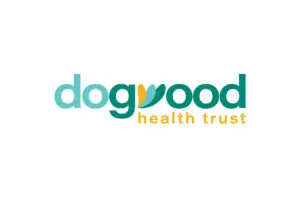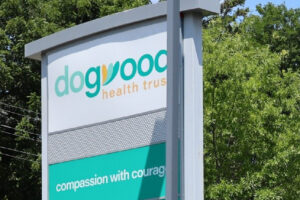Asheville, N.C. – Dogwood Health Trust has announced a new grantmaking process and schedule for 2023 to better align its strategic priorities with its long-term objectives. Beginning this year, Dogwood will accept grant applications within its four strategic priority areas of Housing, Education, Economic Opportunity and Health & Wellness during two grant cycles. Other areas of funding, including Racial Equity and the Leverage Fund, will continue on a rolling basis. The updated process is outlined on Dogwood’s new, user-friendly grantmaking page.
For 2023, initial grant applications within the four strategic priority areas of Housing, Education, Economic Opportunity and Health & Wellness can be submitted from now until Feb. 1, 2023 and May 1, 2023 – June 2, 2023. Additionally, grant cycles have specific focus areas within each strategic priority, which are highlighted on Dogwood’s website.
Any organization within the 18 counties of Western North Carolina and the Qualla Boundary whose work aligns with Dogwood’s strategic priorities and focus areas may begin the grantmaking process by completing a simple “Engage With Us” form. This will connect current and potential partners with a member of the Community Investment team to learn more about Dogwood’s funding opportunities, share an idea, or receive guidance.
Alongside the rollout of this new grantmaking process, Dogwood is hosting virtual open houses. During the meetings, which will be held over Zoom, members of the Community Investment team will explain specific focus areas, share details about the application process and what to expect in 2023, describe what constitutes a successful application, and answer questions. The meetings are open to current and prospective partners, and the schedule and registration links are as follows:
- Health & Wellness Virtual Open House – Tuesday, January 10th at 2 p.m.
- Economic Opportunity Virtual Open House: – Tuesday, January 10th at 2 p.m.
- Housing Virtual Open House – Wednesday, January 11th at 1 p.m.
For questions about funding within Dogwood’s Education Priority, please send an email to [email protected].
“To create a Western North Carolina where every generation can Live, Learn, Earn and Thrive – no exceptions, we recognize that Dogwood’s investments must be both responsive and catalytic,” said Dr. Susan Mims, CEO of Dogwood Health Trust. “We designed our new grant cycles to help streamline and clarify the grantmaking process, so that we can more effectively inspire and fuel the creativity of our partners as they design and implement solutions to our region’s challenges. We will continue to hone this process as we learn more from our partners. In the meantime, we look forward to hearing great ideas from across the region.”
###
About Dogwood Health Trust
Dogwood Health Trust is a private foundation based in Asheville, North Carolina with the sole purpose of dramatically improving the health and wellbeing of all people and communities of 18 counties and the Qualla Boundary in Western North Carolina. Dogwood Health Trust focuses on innovative and equitable ways to address the many factors that contribute to overall health and wellbeing, with a focus on housing, education, economic opportunity, and health and wellness. Dogwood Health Trust works to create a Western North Carolina where every generation can live, learn, earn and thrive, with dignity and opportunity for all, no exceptions. To learn more, please visit www.dht.org.





